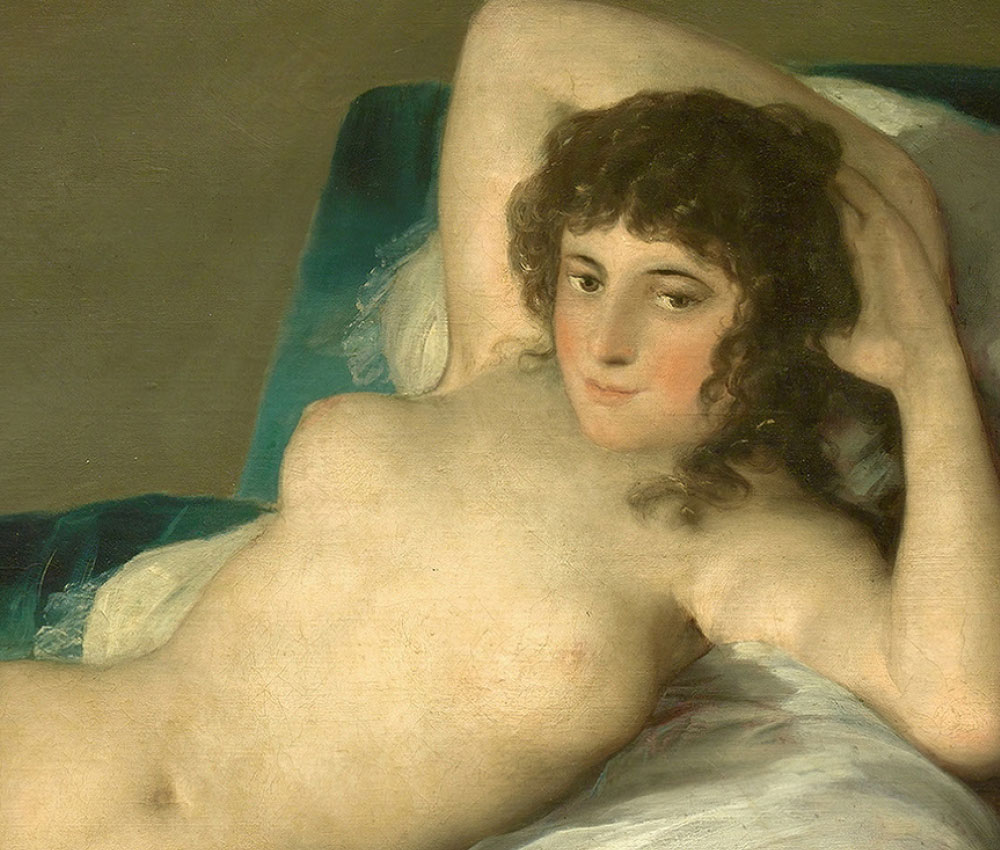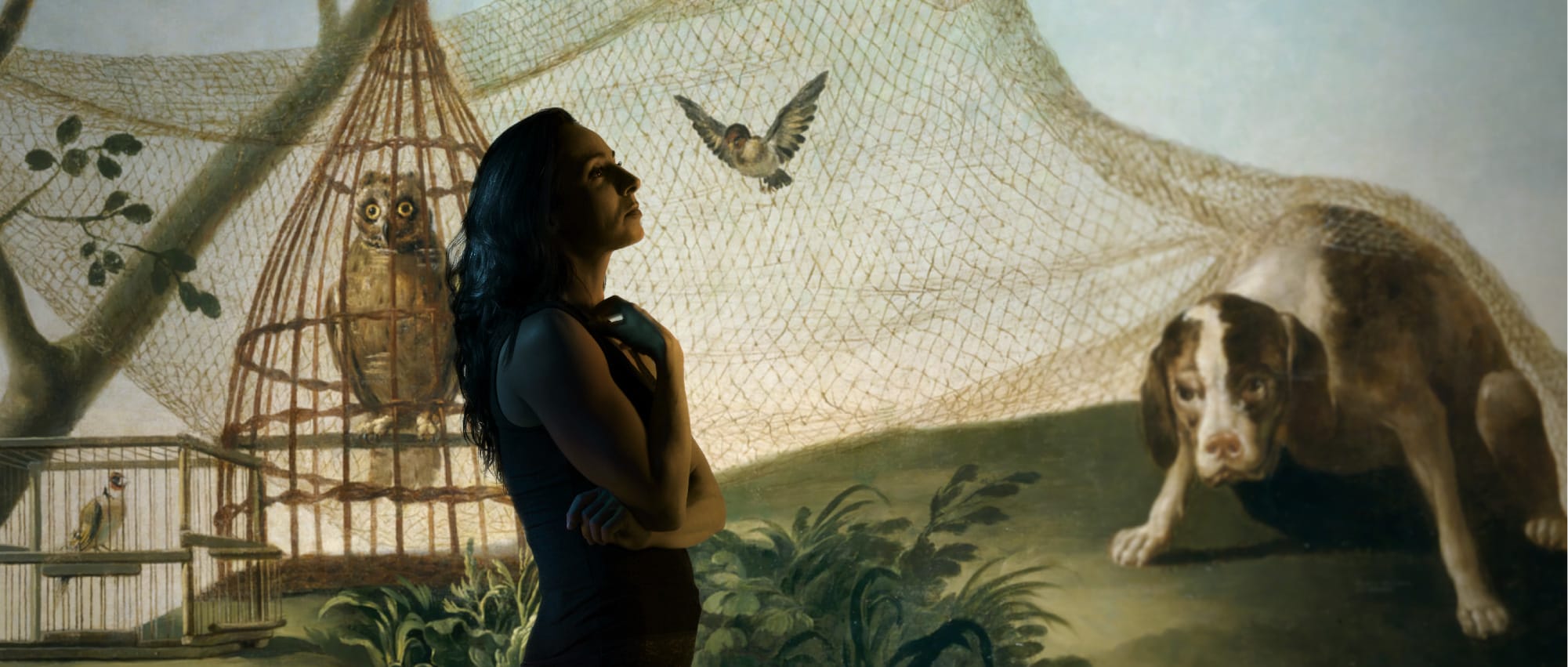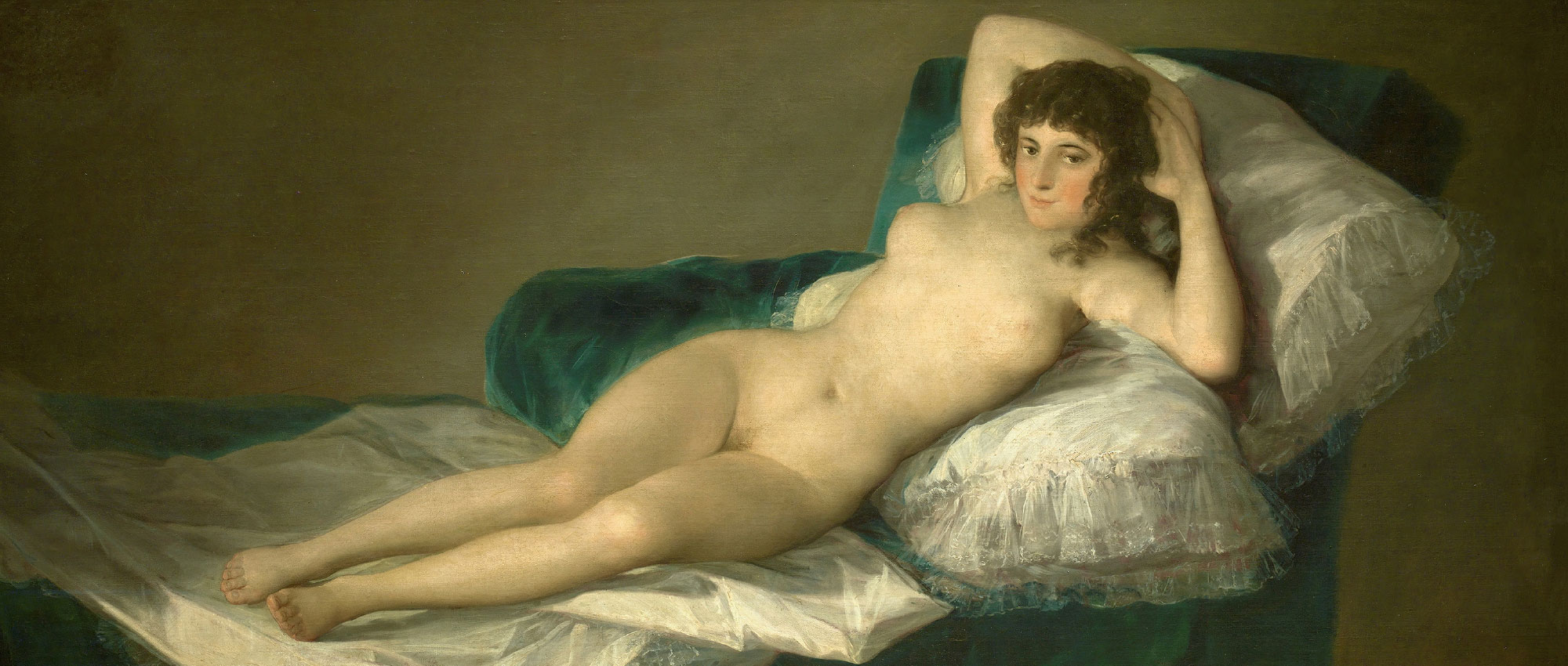
The Naked Maja
The Naked Maja is, together with its clothed version, one of the most emblematic works in Goya’s pictorial output.
However, very little is known about them for certain. It is not known for sure when they were painted, who commissioned them, or for what reason they were created.
The first mention The Naked Maja places it in the year 1800 in a private room in the palace of minister Manuel Godoy, although the way it is painted, in a neoclassical style typical of an early stage of the artist, dates it around 1795. On the contrary, The Clothed Maja shows a more advanced style and is believed to have been made in the first years of the following decade.
It is very possible that Godoy himself initially commissioned The Naked Maja from Goya to pair it other nudes that he had in his collection, like The Toilet of Venus (The Rokeby Venus) by Velázquez and another Venus thought to be a work by Titian, as in those times he was the only one who would have had sufficient influence and power so as to own nude paintings, and to show them whomever he pleased, as they were prohibited by the Inquisition.
The Naked Maja was most likely initially displayed on the wall opposite The Toilet of Venus by Velázquez, creating a visual game that showed the female body from both the front and back. The Clothed Maja, which Godoy would have commissioned years later, would complete the dialogue, this time between a clothed and naked woman. In fact, since the middle of the 19th century a legend has persisted, although it is difficult to prove, that holds that the canvases of the majas were hung one in front of the other, with conjoined frames, and that a mechanism could lift the canvas of the clothed maja, leaving the naked maja exposed to delight those present.
On the contrary, other nineteenth-century legends that have been discarded by historical and technical studies are those that identify the maja as the duchess of Alba or Pepita Tudó, Godoy’s lover, or that which said the head of the naked maja was superimposed, as if it were a mask. However, it is most likely that Goya used an anonymous model, or simply made her up.
In any case, the painter managed to create an image that stands out for its extraordinary beauty and refinement, for the subtlety in its coloring and light, and for the perfection of the finishes of its surfaces.
It has to be pointed out that neither this work, nor its clothed variant, were known by the name ‘majas’. The first mentions of the naked version and a testimony of Javier Goya, the painter’s son, considered it a “venus”, which is to say, that it was identified as the classic goddess of love and beauty, as were other paintings in Godoy’s private cabinet. In a reference in 1808 they were called “gypsies”, while another in 1814 already speaks of “a woman dressed as a maja”, a name that the Tribune of the Inquisition would also use at the end of that year when it confiscated the two works for obscenity and would be applied generally from then on.
Certainly, The Naked Maja follows the traditional typology of the goddess Venus lying in a bed, in this case, with her arms intertwined underneath her head, in a composition that recalls the famous classical sculpture Ariadne Sleeping that was in the Royal Collections during Goya’s time and now is conserved in the Prado Museum. However, in every other aspect, this Venus differs from artistic tradition. In the first place, Goya did without the attributes that tend to accompany images of the goddess, such as the figure of Cupid or doves; and secondly, he places her in a completely revolutionary attitude as she looks directly at the spectator, and smiles provocatively, stripping the woman of the traditional modesty of the classical Venuses, which are always represented aloof. Furthermore, it is the first female nude in the history of painting that clearly depicts pubic hair, an indisputable sign of its absolute modernity.
Its blatant sensuality kept this work in the custody of Inquisition agencies for more than two decades. In 1836, together with The Clothed Maja, it was deposited in the Real Academia de Bellas Artes de San Fernando, but, while the clothed version was exhibited in the galleries of the institution in 1840, the naked version remained hidden from the sight of the public for another forty years. In 1900, both were included in a large exhibition dedicated to Goya, and one year later, in 1901, they were moved to the Prado Museum, where they remain today.


